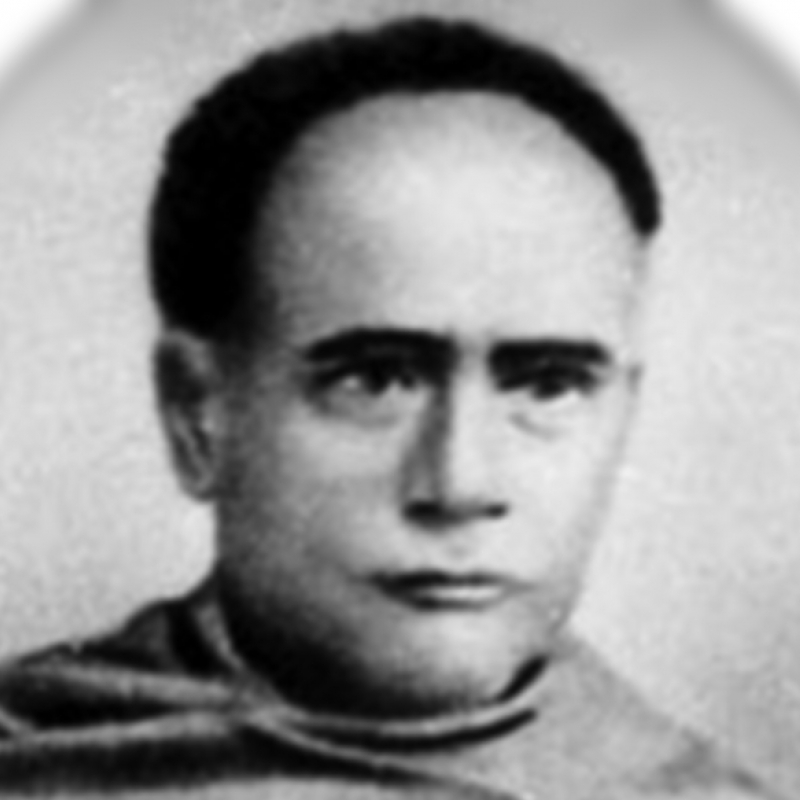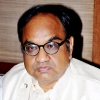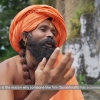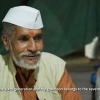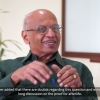Vidyasagar has been consistently charged with entertaining agnostic or atheistic ideas. While he never gave up his sacred thread, had a high regard for certain Brahmanical rites and for Brahmanhood in general, but little patience for specific daily rituals. Here, we look at Vidyasagar’s understanding of Brahmanism (Photo Courtesy: Erik Bjørn Pedersen/Wikimedia Commons)
In nineteenth-century Bengal, two figures who offer an interesting study in contrast are Raja Rammohun Roy (1772–1833) and Pundit Iswarchandra Vidyasagar (1820–-91). This is notwithstanding the fact that they were both Brahmans, closely associated with women-related reform and for that reason, forced to face the wrath of the Hindu orthodoxy alike. But there the similarity ends.
For Rammohun, the site of social reform lay in religion and contrary to popular perceptions, the radical content of his religious reformism was actually greater than that lying in the field of social reform. The uniqueness of Vidyasagar, on the other hand, lies in his deftly bypassing the issue of religion altogether as a key to understanding the travails of contemporary Hindu society or culture. Unlike Rammohun, Vidyasagar neither offered apologetic explanations addressed to the West or the English educated in India of the Hindu’s alleged social, religious or moral ‘decadence’, nor did he engage fellow Hindus in polemical battles over the same. Even when critical of certain Hindu ideas or practices,[1] he did not brazenly offend orthodox susceptibilities as did some members of Young Bengal or abandon his ancestral religion as even some Brahmans had been known to do.
Also read | Vidyasagar: Shastras, Social Reform and Strategy
Prima facie, it would have to be said that in the context of the Bengal Renaissance he, along with his contemporary and co-worker, Akshay Kumar Dutta (1820–86) represent a remarkable social and intellectual initiative almost solely marked by secularity, humanism and reason. In some quarters, this has even encouraged the questionable suggestion that only an ‘agnostic’ or an ‘atheist’ such as Vidyasagar was capable of great humanist compassion.
Both in his time and thereafter, Vidyasagar has been consistently charged with entertaining agnostic or atheistic ideas and the first suggestion to this effect was made by the scholar and literary figure, Krishna Kamal Bhattacharya (1840–1932), once a student at the Sanskrit College. In 1982, in his book, Kolkatay Vidyasagar (Vidyasagar in Kolkata), the historian of colonial Calcutta, Radharaman Mitra, repeated this charge, also citing Vidysagar’s letter[2] of 1853 to the Council of Education, first discovered in 1927, in which he had described the Vedanta and Samkhya[3] as ‘false’ systems of Hindu philosophy. Such comments would have cost Vidyasagar no small measure of unpopularity. One of his biographers, Chandicharan Bandopadhyay (1858–1916), alleged that Vidyasagar made no reference to God or religion in his highly popular school text books, such as Bodhodoy (1851) and was persuaded to make alterations only at the instance of the well-known Brahmo theologian, Bejoy Krishna Goswami (1841–99).
That this was a strongly unsavoury part of his moral pedagogy was a charge also pressed by the Scottish evangelist, John Murdoch (1819–1904) who accused him of preaching ‘rank materialism’ and ‘low miserable morality’ to impressionable minds. Murdoch’s accusations were primarily based on Vidyasagar’s argument outlined in his text books, that human sense perceptions and worldly experience were good enough to guide us in everyday life with no reference really required to Providence or God’s grace. Vidyasagar’s argument here echoes that of Akshay Dutta who once presented–in a formulaic fashion–the claim that since the peasant’s prayers would not necessarily lead to an enhanced grain production, the practical value of prayer had to be simply zero.
Also read | The Idea of Caste in 19th Century Bengal
That apart, Vidyasagar is known to have disregarded taboos regarding food and drink; at the time many were scandalized upon hearing that the Pundit had shared food with a Kayastha friend, Amritlal Mitra. As principal of the Sanskrit College, Calcutta, it was he who made it possible for Kayasthas to be enrolled as students and after some initial hesitation, even the ritually marginalised Subarnabaniks.[4] In his student life, Vidyasagar himself had little regard for observing the daily rites obligatory for the Brahman and this once led an irate father, Thakurdas Bandyopadhyay, to beat him up mercilessly. Vidyasagar mocked Hindu notions of after life, gurus and miracle workers. One of the jokes he was fond of narrating ran as follows: on reaching the gates of heaven, some Hindus were subjected to lashings as punishment for entertaining false beliefs but protested, arguing that they had only followed the instructions of their guru. Upon hearing this, Vidyasagar merrily quipped, the sentries summoned the guru himself and gave him a few extra lashings! In the Pundit’s opinion, the moral of the story was that one ought not to preach matters that they were incapable of understanding themselves.
Vidyasagar confessed to have never understood the concept of a just and merciful God since that failed to explain why the innocent and the weak were subjected to all kinds of injustice and oppression. He was simply devastated to learn of the sinking of the ship Sir John Lawrence in 1887 off the coast of Odisha, killing all passengers on board.
Related | Remembering Iswarchandra Vidyasagar
Recent research, however, allows us to contest and complicate some of these settled opinions. It has been established for instance, that the subject of a creator God appeared in the very first edition of the Bodhodoy in 1851, though described only as nirakar, chaitanyaswarup, a formless entity representing pure Consciousness and not the personal deity of pious adoration. The reference was taken out after 1852 and made a comeback sometime before 1867, we cannot be sure exactly when. One of the stories in the anthology, Akhyanmanjari-II (1868), is called ‘Aishik Vyabasthay Biswas’ (Faith in Providence) and narrates the story of a boy who firmly believed that God had assigned him a certain station in life and which he was duly destined to fulfill some day.
Like Rammohun, Vidyasagar never gave up his sacred thread, had a high regard for certain Brahmanical rites and for Brahmanhood in general. In 1864, he opposed the idea of introducing unconventional arrangements for cremation at Nimtala Ghat in north Calcutta; in 1876 he personally washed the feet of the Brahmans gathered over the funerary rites of his father at Kashi. Some of the limitations that affected the success of his widow marriage campaign were undoubtedly of his making. Vidyasgar agreed to support the Brahmo, Gurucharan Mahalanobis marrying a widow only if he agreed to follow Hindu marriage rites and frowned upon marrying parties invoking Act III of 1872, which required them to declare that they did not belong to any established religious order. Could it be that Vidyasagar too adhered to the view, articulated by Chattopadhyay in his treatise Dharmatattwa (1888), that religion was essentially culture?
It also occurs to me that his self-understanding as ‘Brahman as the law giver’ and the ‘exemplar of everyday Hindu life’ cannot be seriously disputed and this came forth sharply in the course of his social reform campaigns. It may not be fortuitous too that he resorted to the use of shastras in a province where all major initiatives for reform came from the Brahman. Vidyasagar remained a Brahmanist with little or no interest in Brahmanical religion.
This article was also published on Scroll.
Notes
[1] For instance, he never followed the customary sandhya rituals obligatory for a Brahman and ridiculed Hindu notions of afterlife.
[2] Indra Mitra, Karunasagar Vidyasagar (Kolkata: Ananda Publishers, 2012), 658–61.
[3] Samkhya and Vedanta are two of the acknowledged six systems of Hindu philosophy (Shadadarshana). Of these, Samkhya, said to be formulated by the sage Kapila, is the older system which was atheistic to begin with but later turned theistic upon drawing close to the philosophy of Yoga. It is dualistic in nature and speaks of the twin principles of Purusa and Prakriti. The first corresponding with the unchanging ‘absolute’ and the second, with the mutating material world. Vedanta—meaning the ‘end of the Vedas’ as also ‘the quintessence of the Vedas’—has attracted the greatest attention of sages and scholars alike. Among all schools of Hindu philosophy, it has the largest body of extant literature. There are many sub-schools within Vedanta, the chief of which is Advaita, or non-dualist Vedanta, best identified with the early medieval philosopher Sankara. Compared to Samkhya, it is idealistic in nature.
[4] Admission to the Sanskrit College was originally restricted to boys of the Brahman and Baidya castes only.
